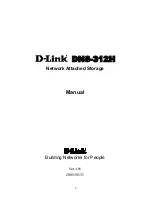
•
RAID 50
: a combination of RAID 0 and RAID 5
RAID 50 uses distributed parity and disk striping. A RAID 50 drive group is a spanned drive group in
which data is striped across multiple RAID 5 drive groups. RAID 50 works best with data that requires
high reliability, high request rates, high data transfers, and medium-to-large capacity.
Note:
Having virtual drives of different RAID levels, such as RAID 0 and RAID 5, in the same drive group is
not allowed. For example, if an existing RAID 5 virtual drive is created out of partial space in an array, the
next virtual drive in the array has to be RAID 5 only.
RAID 50 requires a minimum number of six hard disk drives.
•
RAID 60
: a combination of RAID 0 and RAID 6
RAID 60 uses distributed parity, with two independent parity blocks per stripe in each RAID set, and disk
striping. A RAID 60 virtual drive can survive the loss of two drives in each of the RAID 6 sets without
losing data. RAID 60 works best with data that requires high reliability, high request rates, high data
transfers, and medium-to-large capacity.
RAID 60 requires a minimum number of six hard disk drives.
For
detailed information about RAID, refer to “Introduction to RAID” in the
MegaRAID SAS Software User
Guide
on the documentation disc that comes with your server.
Configuring RAID using the Lenovo ThinkServer Deployment Manager
program
Deployment Manager simplifies the process of configuring supported RAID. The help system for the program
can be accessed directly from the program interface.
Deployment Manager has the following features for RAID configuration:
• For use with all supported RAID controllers
• Automatically detects hardware and lists all supported RAID configurations
• Configures one or more disk arrays per controller depending on the number of drives attached to the
controller and the RAID level selected
• Supports hot-spare drives
• Creates a RAID response file that can be used to configure RAID controllers on similarly configured
Lenovo servers
“Lenovo ThinkServer Deployment Manager” on page 13 and view the help system from the main
interface of the program.
Configuring the advanced SATA or SAS hardware RAID
Your server comes with a RAID adapter to provide advanced SATA or SAS hardware RAID functions.
Note:
Depending on the operating system, the total drive capacity of the primary RAID might be limited to
2 TB.
You can use the following programs or tools to configure the advanced SATA or SAS hardware RAID.
• MegaRAID Human Interface Infrastructure (HII) configuration utility
This utility enables you to configure RAID independently of the operating system. To display the HII
configuration utility interface, start the server and press the F1 key as soon as you see the logo screen to
enter the Setup Utility program. Then, select
Boot Manager
➙
Adapters and UEFI Drivers
.
• MegaRAID Storage Manager program
52
ThinkServer RD350G User Guide and Hardware Maintenance Manual
Содержание ThinkServer RD350G
Страница 14: ...xii ThinkServer RD350G User Guide and Hardware Maintenance Manual ...
Страница 18: ...4 ThinkServer RD350G User Guide and Hardware Maintenance Manual ...
Страница 20: ...6 ThinkServer RD350G User Guide and Hardware Maintenance Manual ...
Страница 54: ...40 ThinkServer RD350G User Guide and Hardware Maintenance Manual ...
Страница 68: ...54 ThinkServer RD350G User Guide and Hardware Maintenance Manual ...
Страница 168: ...154 ThinkServer RD350G User Guide and Hardware Maintenance Manual ...
Страница 180: ...166 ThinkServer RD350G User Guide and Hardware Maintenance Manual ...
Страница 185: ......
Страница 186: ...Lenovo ...
















































